#fhir
Explore tagged Tumblr posts
Text
let's all hate on a corporate implementation of an open standard!! yeah
#AllergyIntolerance.Create() <- constructor modeling what my immune system is doing all the time every day!! yeah#note to self#coding#medical cw#hl7#fhir
3 notes
·
View notes
Text
Beyond the Consult: Enhancing Patient Engagement with ClinDCast's Integrated Features
Telehealth has redefined patient-provider interactions by eliminating physical barriers and offering convenient access to care. However, a successful telehealth experience goes beyond just video consultations. It's about fostering patient engagement, empowering individuals to actively participate in their healthcare journey. Luckily, ClinDCast understands this and goes beyond basic video conferencing, offering a suite of integrated features that enhance patient engagement in meaningful ways.
Elevating the Telehealth Experience:
Appointment Scheduling Made Easy: Gone are the days of endless phone calls and calendar juggling. ClindCast's integrated scheduling system allows patients to book appointments online or through the app, 24/7, at their own convenience. This flexibility empowers patients and reduces administrative burden for healthcare providers.
Patient Portals: A Gateway to Healthcare Information: ClindCast's secure patient portals provide a one-stop shop for managing healthcare needs. Patients can access their medical records, lab results, medication lists, and appointment history, all in one place. This transparency and accessibility encourages proactive engagement in their health.
Remote Monitoring: Taking Control of Health Between Visits: ClindCast's integration with various wearables and monitoring devices allows patients to track vital signs, symptoms, and medication adherence remotely. This data empowers both patients and providers to make informed decisions and identify potential issues early on, leading to improved outcomes.
Personalized Communication and Education: ClindCast allows for secure messaging between patients and providers, facilitating ongoing communication and addressing queries outside of scheduled appointments. Additionally, the platform can deliver educational materials and resources customized to patients' specific needs, fostering proactive engagement and health literacy.
Real-World Impact and Satisfied Users:
The benefits of ClindCast's integrated features are not just theoretical. Numerous healthcare providers and patients have experienced firsthand the positive impact on engagement:
Hospital: Using ClinDCast's patient portal and remote monitoring features, their chronic disease management program saw a 20% increase in patient adherence to medication and treatment plans, leading to improved clinical outcomes.
Patient: After adopting ClindCast for her post-surgical appointments, she found the convenience and access to her medical records through the patient portal invaluable. This empowered her to ask informed questions and actively participate in her recovery process.
Unlocking the Potential of Patient Engagement:
ClinDCast's commitment to comprehensive telehealth solutions goes beyond basic consultations. By integrating features that support appointment scheduling, patient portals, remote monitoring, and personalized communication, the platform fosters a more engaged and collaborative healthcare experience. This approach empowers patients to take control of their health, improves communication with providers, and ultimately leads to better healthcare outcomes for everyone.
Ready to Experience the Difference?
If you're looking for a telehealth platform that prioritizes patient engagement and empowers individuals to manage their health proactively, ClinDCast is worth exploring. With its user-friendly interface, rich feature set, and commitment to accessibility, ClinDCast is paving the way for a future where patients are truly partners in their healthcare journey.
2 notes
·
View notes
Text
A Cheat Sheet for EHR Data Conversion and Migration

Bid farewell to data headaches and embrace a seamless transition between Electronic Health Record (EHR) systems! Moving to a new Electronic Health Record (EHR) can feel like scaling Mount Data Everest, but fear not, brave healthcare hero. This cheat sheet is your trusty sherpa, guiding you through the tricky terrain of data conversion and migration.
Before You Begin
Investigate how both your current and future EHR systems handle data export and import. Is it a database dump, APIs, or file transfers? The sooner you understand, the smoother the migration.
Do not assume that all data is easily transferable. Scrutinize your data to ensure it meets the new system’s requirements, as not all elements may seamlessly make the journey.
Don’t rely on cumbersome claim transfers. Wrap up outstanding accounts receivable in your old system before making the switch.
Schedule your migration around holidays to minimize disruption and give your team (and the data!) breathing room.
Conversion Strategies
Embrace a phased approach. Move demographics, appointments, and master lists first. Clinical data can wait (gasp!). This lets your team and the new EHR prioritize and get you online ASAP.
Conduct multiple tests, running trial conversions on small patient samples (say 30 patients). You’ll unearth issues before they become mountain-sized problems.
Consider retaining temporary access to your old system for reference purposes. It’s like a safety net for those “oh, I forgot that!” moments.
Not everything needs a new home. Utilize an archival system for data you don’t need in the new EHR.
Data Essentials
Ensure a smooth migration by prioritizing the transfer of the following essential data:
Patient Information: Demographics, insurance scans, policy details, historic charges/balances.
Appointments: Both past and future appointments, meticulously organized.
Master Lists: Categorize and transfer insurance providers, referral sources, and other relevant lists.
Clinical Data: Chart PDFs, discrete text data, allergies, medications, problem lists, immunizations, and progress notes.
Procedures: Transfer detailed information such as CPT codes, modifiers, and pre-authorization codes.
CCDAs: Acquire the Summary of Care document, a valuable data repository.
Financials: Limited financial data may be transferred, but confirm the specifics with your new EHR to ensure accuracy.
Bonus Tip: Make a list of all your EHR integration points like FHIR, HL7 V2, APIs, CSV files. Don’t leave any data orphans behind!
But fear not, weary traveler! You don’t have to climb this mountain alone. We’re here to help with expert guidance, proven strategies, and a team of data Sherpas ready to tackle any conversion challenge. Contact us today for a free consultation and let’s turn your EHR migration into a smooth and stress-free journey!
Remember, with the right plan and a helping hand, even the mightiest data peak can be conquered.
You may find this article on Falkondata website by following this link: https://falkondata.com/ehr-data-conversion-cheat-sheet/
2 notes
·
View notes
Text
Hire Best Talent in Healthcare IT
2 notes
·
View notes
Text
2 notes
·
View notes
Link
Fast Healthcare Interoperability Resources, or FHIR, are a crucial component of contemporary healthcare. It is a protocol for electronically transmitting medical data. It is intended to make it simpler for patients to access their health information as well as for healthcare providers to transfer data among systems. Modern web technologies are the foundation of FHIR, which was designed to be adaptable, modular, and extendable. As a result, it is an effective tool for handling healthcare data. Electronic health records (EHRs) are becoming more prevalent, and there is a growing need for efficient and secure data sharing. In reality, it's crucial to comprehending how to begin using FHIR. We will discuss the fundamentals of FHIR in this FHIR implementation guide. Provide step-by-step instructions for using this cutting-edge technology as well.
#smile cdr#FHIR#FHIR Implementation#Implement FHIR#FHIR Implementation Guide#Fast Healthcare Interoperability Resources#healthcare information exchange#Healthcare IT#Healthcare Technology#Healthcare Interoperability#HAPI FHIR#Firely FHIR#Microsoft Azure API for FHIR#Google Cloud Healthcare API#AWS HealthLake#non-technical to implement FHIR#FHIR applications#Healthcare Integration#Healthcare IT Integration#FHIR client#exchange patient data#electronic health record#EHR system#cloud platform#healthcare ecosystem#FHIR server#FHIR for healthcare
2 notes
·
View notes
Text
Fhir interoperability
Implementing healthcare interoperability with FHIR (Fast Healthcare Interoperability Resources) standards is essential for seamless data exchange among healthcare systems. FHIR provides a framework that enables different healthcare applications to communicate effectively, improving patient care coordination and data accessibility. By adopting FHIR standards, organizations can enhance interoperability, reduce errors, and promote more efficient healthcare delivery. For a comprehensive guide, read the full article on the Jelvix blog: Enhancing Healthcare Interoperability with FHIR Standards at this link.

0 notes
Text
Healthcare Interoperability
Dive into the world of healthcare interoperability with our latest post on the In-Depth FHIR Implementation Guide! Understanding FHIR (Fast Healthcare Interoperability Resources) is key to unlocking seamless data exchange between healthcare systems, paving the way for improved patient care and streamlined workflows.
In this comprehensive guide, we break down the intricacies of FHIR implementation, providing insights into its core concepts, data models, and interoperability standards. From understanding resource types to mapping clinical data, we've got you covered every step of the way.
Discover how FHIR empowers healthcare organizations to exchange data efficiently, facilitating better coordination of care, interoperability between systems, and ultimately, enhancing patient outcomes.
Whether you're a healthcare professional, developer, or simply curious about the future of healthcare technology, this guide is your go-to resource for mastering FHIR implementation and driving innovation in healthcare interoperability.
Ready to unlock the potential of healthcare data exchange? Click the link in our bio to read the full guide now!
0 notes
Text
Fast Healthcare Interoperability Resources UK
Elevate Care with FHIR Interoperability. Fast Healthcare Interoperability Resources enable seamless data exchange. Unlock a new era of coordinated care and informed medical decisions with FHIR.
0 notes
Text
HL7 Interface Integration: How is HL7 implemented in Healthcare
In the healthcare landscape, where the seamless and secure exchange of information is paramount, HL7 stands as the linchpin connecting disparate systems and fostering interoperability.
HL7, stands for Health Level Seven, is a set of international standards for the exchange, integration, sharing, and retrieval of electronic health information. It is the most widely used messaging standard in healthcare, facilitating the communication and interoperability between different healthcare systems, devices, and applications.
As per the latest data, approximately 95% of hospitals in the United States utilize HL7 standards to facilitate interoperability and information exchange among healthcare systems and applications. HL7 is the universal language that enables diverse healthcare applications and systems to exchange crucial data.
In the future, as the healthcare industry continues its digital transformation, the significance of HL7 integration cannot be overstated. It not only streamlines communication between different entities within the healthcare ecosystem but also plays a pivotal role in enhancing patient care, improving operational efficiency, and ensuring compliance with evolving standards.
Our guide explores the intricate world of HL7 integration, its standards, benefits, and its transformative influence on healthcare organizations. It introduces you to a trusted partner, Rockit, that leverages the full potential of HL7.
A Closer Look at HL7 And The Primary Data Standards
Delving into the intricate world of HL7 standards, let’s unravel the checklist that defines its essence:
Communication Backbone: HL7 stands as the orchestrator of healthcare platforms, seamlessly weaving a tapestry of communication among diverse systems.
Essential Standards: At the heart of HL7 are pivotal standards—HL7 V2, HL7 CDA, HL7 EHR, and HL7 FHIR—each playing a crucial role in shaping the landscape of healthcare data exchange.
Interoperability Marvel: By ensuring interoperability, diverse healthcare systems can collaborate effortlessly and share vital information.
Revolutionizing Exchange: Overcoming challenges, HL7 spearheads a revolution in data exchange by providing standardized approaches that transcend the complexities of disparate systems.
Core Components: The foundation of HL7 rests on two pillars—the [RIM (Reference Information Model)] and messaging standards, forming a robust structure for the organization and representation of healthcare information.
Blueprint with RIM: The RIM serves as a blueprint, ensuring standardized data organization for consistency across different healthcare entities.
Flexible Messaging: HL7 messaging standards are not rigid; they are customizable to meet the specific needs of different healthcare scenarios.
Continuous Evolution: HL7 is not static; it evolves continuously, adapting to technological advancements and proactively addressing emerging challenges in the dynamic healthcare landscape.
Crucial Role: HL7 is not just an element; it is indispensable, playing a crucial role in enabling the seamless exchange of information and, consequently, elevating the standards of patient care.
What is the Role of HL7 in Healthcare?
With data flowing from diverse systems in healthcare, HL7 emerges as the key to unraveling complexities. The healthcare landscape, with its myriad systems, applications, and devices, demands a unified language for efficient communication. HL7 integration steps into this arena, revolutionizing the exchange of patient information, test results, and medication orders.
By addressing the intricacies of clinical workflows, messaging standards, real-time precision, batch processing, and fortified security protocols, HL7 emerges as the sentient in achieving a cohesive and interconnected healthcare ecosystem.
Enhanced Clinical Workflows
HL7 stands as the guardian of accurate and secure data exchange, ensuring consistency in the flow of information across systems and applications. Employing a sophisticated message-based approach, healthcare systems communicate through HL7 messages, each following a meticulously defined message profile. This profile outlines the format, content, and significance of every data element within the message.
The Symphony of HL7 Messaging Standards
HL7’s versatile messaging standards, known as HL7 v2.x messages, serve diverse purposes, from patient admission to laboratory orders and results reporting. These messages traverse the healthcare network using established transport protocols like TCP/IP or web services, ensuring robust and reliable data exchange.
Real-Time Precision and Batch Brilliance
HL7 messages adapt to the urgency and volume of data, offering real-time precision for critical information like emergency department admissions or laboratory alerts. Simultaneously, the batch mode efficiently handles non-urgent data, such as daily patient summaries or billing information.
Fortified Security Protocols
HL7’s commitment extends to security, with support for multiple communication protocols—TCP/IP, HTTP, and HTTPS. This fortification ensures that healthcare systems exchange data securely over networks. Additionally, HL7 messages can be encrypted and digitally signed, guaranteeing data integrity and confidentiality.
Benefits of HL7 Integration for Healthcare Providers
HL7 integration emerges as a game-changer for healthcare, offering a spectrum of benefits:
Enhanced Interoperability: HL7 breaks down data silos, fostering seamless communication between disparate healthcare systems and improving collaboration.
Elevated Patient Care: Facilitating the exchange of timely and accurate information, HL7 integration provides a comprehensive view of a patient’s medical history, enabling well-informed clinical decisions and ultimately enhancing patient care outcomes.
Revolutionized Workflows: Automation through HL7 integration reduces manual data entry and administrative burdens, allowing healthcare professionals to redirect their focus to direct patient care, thereby improving efficiency and productivity.
Optimized Resource Allocation: Integrating systems and applications enables healthcare organizations to optimize the allocation of resources, leading to cost savings and improved operational efficiency. For instance, HL7 integration facilitates real-time updates on bed capacity, allowing hospitals to make informed decisions about patient admissions and transfers.
The impact of HL7 integration extends beyond breaking down barriers—it transforms the healthcare landscape by promoting collaboration, improving patient care, streamlining workflows, and optimizing resource utilization. The power of HL7 lies in its ability to not only connect systems but to revolutionize how healthcare is delivered and managed.
Use Cases And Challenges of HL7 Integration
Use Cases
HL7 integration finds application in various healthcare settings:
Electronic Health Record (EHR) integration: HL7 facilitates the exchange of patient data between EHR systems, ensuring healthcare providers have access to complete and accurate patient information.
Laboratory information system integration: HL7 allows for seamless communication between laboratory systems and EHRs, enabling timely reporting of lab results and enhancing diagnostic workflows.
Clinical decision support integration: HL7 integration enables the integration of clinical decision support systems with EHRs, providing healthcare providers with real-time alerts, reminders, and evidence-based guidelines for improved decision-making.
Challenges
While HL7 integration offers significant benefits, it is not without its challenges. Some common challenges include:
Data standardization: Ensuring data consistency and standardization across different systems can be complex, requiring mapping and transformation of data elements to match the target system’s requirements.
System complexity: Integrating multiple systems with different technologies and protocols requires careful planning, configuration, and monitoring to ensure smooth data exchange.
Security and privacy concerns: As healthcare data is highly sensitive, maintaining privacy and security during data exchange is crucial. HL7 integration solutions must adhere to stringent data protection regulations, such as HIPAA.
How Can Rockit Help with HL7 and Interoperability?
From app development to expert talent sourcing, Rockit provides robust and scalable end-to-end software solutions that allow healthcare organizations to achieve seamless data exchange and interoperability. Our expertise in HL7 ensures that the solutions we deliver align with industry standards, facilitating effective communication across diverse healthcare systems. By leveraging HL7’s messaging standards, real-time precision, and security protocols, our team ensures that the software solutions we develop contribute to the vision of seamless healthcare, promoting efficient sharing of patient information.
Additionally, Rockit Healthcare solutions prioritize security and compliance, ensuring that patient data is protected throughout the integration process.
By partnering with Rockit, healthcare businesses can unlock the full potential of HL7 integration, streamline their operations, and improve patient care.
Parting Thoughts
As technology advances and healthcare systems become more interconnected, HL7 is poised to play a central role in shaping the data exchange landscape. The ongoing development and adoption of HL7 standards are expected to streamline communication, foster innovation further, and ultimately contribute to a more unified and efficient healthcare ecosystem.
By understanding the importance, benefits, use cases, and challenges of HL7 integration, businesses can make informed decisions and leverage the expertise of companies like Rockit to unlock the full potential of this transformative technology.
Article source: https://rockitteam.com/blogs/hl7-interface-integration-how-is-hl7-implemented-in-healthcare/
0 notes
Text
2024: The Dawn of Interconnected Healthcare

Envision a world where medical records seamlessly traverse between hospitals, medical practices, and pharmacies, guiding care decisions. Healthcare's future shines bright in 2024, illuminated by three major trends poised to revolutionize how we experience and deliver health: interoperability, revenue cycle management (RCM) optimization, and empowered patient engagement.
Interoperability
The longstanding aspiration of unlocking healthcare data is finally becoming a reality. After years of anticipation, 2023 witnessed the momentous launch of the nationwide data exchange powered by TEFCA (Trusted Exchange Framework and Common Agreement). This landmark framework acts as a key, unlocking data silos and allowing medical records to flow freely across different healthcare systems nationwide. This unprecedented data liberation promises to harmonize care coordination, drastically reducing medical errors and eliminating redundant tests. The future of healthcare looks brighter than ever, with patients empowered to actively participate in their own journey by easily accessing their complete medical picture across disparate providers.
RCM Evolution
Picture cloud-based RCM platforms powered by AI automation, where bills are personalized, claims processed seamlessly, and denials tackled proactively. We are well on the path to realizing this vision. According to a recent survey conducted by Change Healthcare, 98% of healthcare leaders across the US plan to leverage AI across their revenue cycle within the next three years. This aligns with several other studies from organizations like HFMA and NBER, all highlighting the rising adoption of AI for tasks like automated claims processing, personalized billing, and proactive denial management. This growing focus on AI-powered RCM is fueled by its potential to support value-based care models, where providers are rewarded for improved patient outcomes rather than just the number of procedures performed.
Patient Engagement, Redefined
With virtual care models taking center stage, AI advances like Google’s PaLM2 and others are fueling a patient-centric healthcare revolution. Robust language models tailor interventions, while intelligent assistants handle appointments and provide real-time support. The healthcare landscape is transitioning from hospital to the comfort of our homes, empowered by convenient virtual consultations and remote monitoring.
Beyond the Horizon
This glimpse into the healthcare landscape of 2024 is just the first act. Picture wearable sensors feeding real-time health data into AI-powered models that predict and prevent illnesses. The possibilities are limitless, driven by ongoing technological advancements and an unwavering commitment to patient-centered care.
So, buckle up. We stand on the precipice of a transformative era where data intertwines with innovation, finances align with outcomes, and patients rightfully take center stage in their well-being. The future of healthcare is not merely interconnected – it's genuinely human-centric, and 2024 is only the beginning.
Ready to make this journey easier? Reach out to Falkondata and discover how we can streamline your process and achieve your goals.
#ehr#future of healthcare#health and wellness#AdvancedMD#Falkondata#interoperability#EHR Integration#FHIR#health tech#patient care#medical billing services#healthcare industry#hl7
0 notes
Text
Elevate Healthcare Excellence with ClinDCast: Your Gateway to the Best Healthcare IT Consulting Services
In the ever-evolving landscape of healthcare, the role of robust and innovative IT solutions is paramount. As healthcare organizations navigate digital transformation, choosing the right IT consulting partner becomes a strategic decision. Enter ClinDCast, the beacon of excellence in healthcare IT consulting. Join us as we explore how ClinDCast emerges as the best Healthcare IT Consulting company, guiding healthcare institutions toward a future of efficiency, precision, and patient-centric care.
The Crucial Role of Healthcare IT Consulting:
Healthcare IT Consulting plays a pivotal role in helping organizations harness the power of technology to enhance patient care, streamline operations, and stay ahead in an increasingly digital world. The right consulting partner becomes a catalyst for success in the complex and dynamic healthcare environment.
Clindcast's Expertise: Your Path to Healthcare IT Excellence
1. Tailored Solutions for Every Need:
Clindcast understands that every healthcare organization is unique, with distinct challenges and goals. Their approach involves crafting tailored solutions that align seamlessly with the specific needs and objectives of each client, ensuring maximum impact and value.
2. Comprehensive IT Strategy Development:
As the best Healthcare IT Consulting company, Clindcast goes beyond implementing isolated solutions. They specialize in comprehensive IT strategy development, aligning technology initiatives with organizational goals to drive long-term success and sustainability.
3. EHR Implementation and Optimization:
Electronic Health Record (EHR) systems are the backbone of modern healthcare. Clindcast excels in EHR implementation and optimization, ensuring that healthcare providers have a robust digital infrastructure to enhance patient care, streamline workflows, and meet regulatory requirements.
4. Interoperability Solutions:
In the interconnected world of healthcare, interoperability is key. Clindcast provides cutting-edge interoperability solutions, facilitating seamless data exchange between systems and ensuring that healthcare professionals have access to critical information when and where it's needed most.
5. Cybersecurity and Compliance Expertise:
As healthcare data becomes more digitized, cybersecurity is a non-negotiable priority. Clindcast prioritizes the security and compliance of healthcare IT systems, implementing robust measures to safeguard patient information and ensure adherence to industry regulations.
6. Continuous Support and Innovation:
Clindcast's commitment extends beyond implementation. They provide continuous support, monitoring, and updates to keep healthcare IT systems running at peak performance. Additionally, their focus on innovation ensures that clients stay ahead of the curve in adopting emerging technologies for improved patient care.
Conclusion: Clindcast - Your Partner in Healthcare IT Excellence
In the dynamic realm of healthcare, where precision and efficiency are paramount, Clindcast stands out as the best Healthcare IT Consulting company. Their commitment to tailored solutions, comprehensive strategy development, EHR optimization, interoperability, cybersecurity, and continuous innovation makes them the trusted choice for healthcare organizations seeking to thrive in the digital era.
Ready to elevate your healthcare IT landscape with the best in the business? Explore the transformative solutions offered by Clindcast and embark on a journey toward healthcare excellence, where technology becomes an enabler for superior patient care and organizational success.
4 notes
·
View notes
Text
Medical Practices Need to Embrace Two-Way Texting and AI

Let's face it, calling your doctor's office can be an exercise in frustration. Long hold times, automated menus, and the dreaded elevator music...it's enough to make anyone lose their cool. But what if there was a better way?
Here's the truth: traditional voice-only medical practices are outdated. Patients shouldn't have to waste precious time on hold for simple tasks like scheduling appointments, refilling prescriptions, or paying bills. This outdated system creates a frustrating experience for everyone involved. Patients are left feeling unheard and unimportant, while overwhelmed front desk staff struggle to keep up with the constant ringing.
There's a better way. Medical practices can leverage technology to offer a more convenient and efficient experience for patients. Here's how:
Embrace two-way texting: Texting is the dominant communication method today. Studies show a 95% open rate for text messages, meaning patients are far more likely to see and respond to a text than answer a call. Two-way texting allows for real-time conversations, streamlining communication for both patients and staff. Practices can leverage this technology to:
Schedule appointments
Refill prescriptions
Send directions to the office location
Answer basic questions
Send appointment reminders and confirmations
Collect patient feedback
The good news? You don't have to ditch your existing phone number! Text-enabling technology allows you to seamlessly integrate texting with your current office phone line. This means patients can still reach you at the familiar number they know, but with the added convenience of texting.
Smarter texting with AI: Instead of a clunky AI chatbot, a smarter texting solution powered by AI can assist both staff and patients. This AI assistant can:
Understand natural language: No more robotic responses! The AI can understand the intent behind a patient's text message, allowing for a more natural and efficient conversation.
Provide automated responses: The AI can handle frequently asked questions and basic tasks like appointment confirmations, prescription refill reminders, and insurance updates.
Route complexities to staff: For more complex inquiries, the AI can seamlessly route the conversation to a staff member, ensuring all patient needs are met.
But it doesn't stop there. Here's what a winning texting solution should offer:
EHR integration: A seamless integration with your Electronic Health Record (EHR) ensures all patient information is readily available for a smooth texting experience.
Worklist management: An easy-to-use interface allows front office staff to manage their workload efficiently, prioritize messages, and collaborate with the AI assistant for faster responses.
By implementing these technologies, medical practices can:
Reduce hold times: No more waiting on hold! Patients can handle routine tasks quickly and efficiently.
Improve patient satisfaction: A more convenient experience leads to happier patients.
Increase staff efficiency: Freeing up staff from constant phone calls allows them to focus on more complex tasks and patient care.
The time for change is now. Let's ditch the outdated phone-only system and embrace a more patient-centric approach. Two-way texting with the help of an AI assistant offers a future where medical care is convenient, efficient, and puts the patient first.
Ready to transform your patients' experience? Contact us for more information.
0 notes
Text
FHIR + HL7 Magic: Elevate Your Healthcare Apps and Data
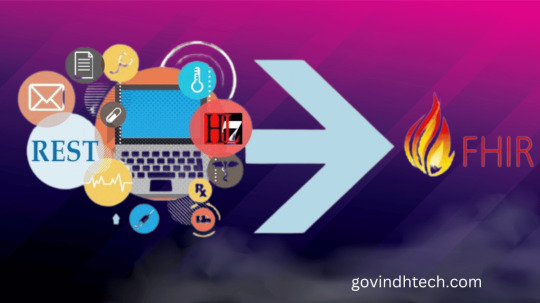
Mastering FHIR + HL7 Integration
To manage their everyday processes, latest healthcare providers depend on a vast network of partners and a diverse range of apps and data. Their success depends on their ability to integrate these apps and data, which enables them to provide effective and efficient patient care.
Due to the sensitive and complicated nature of the data involved, the healthcare sector has fallen behind even with the advancements in data transformation and integration technologies that have enabled quicker and simpler data transmission between applications. The fact that some healthcare data are still transferred in physical format actually prevents providers from taking use of automation and integration.
Describe HL7
A set of international standards called Health Level Seven (HL7) was created to address this issue. A group of technology and healthcare professionals called Health Level Seven International developed the standards, which were first launched in 1989 with the intention of improving hospital workflow assistance. For the purpose of enhancing interoperability in healthcare, HL7 has offered a common set of patient traits and clinical events.
The FHIR Standard: What Is It?
HL7 has been updated to the Fast Healthcare Interoperability Resource (FHIR).
The FHIR protocol establishes guidelines for the interchange of healthcare data, encompassing the transfer of medical records across various computer systems, irrespective of their storage type. Electronic health records (EHRs) and electronic medical records (EMRs) can be exchanged via an application programming interface (API), which is described in the FHIR standard along with data components, communications, and document formats. Since FHIR offers open APIs, continuous real-time data sharing is made possible.
What advantages does FHIR offer?
Even if a patient uses many plans (many payers utilizing numerous EHRs) and sees multiple physicians in various healthcare organizations, FHIR makes it easier for them to manage their treatment. FHIR standards provide a comprehensive picture of patient information to enhance overall care coordination and clinical decision support by establishing a single, unified personal patient health record that combines data from various formats. More efficient, individualized, integrated, and economical healthcare options are advantageous to everybody.
What distinctions exist between HL7 and FHIR?
FHIR employs popular web standards including RESTful APIs, XML, JSON, and HTTP and pulls on earlier standards like HL7 Version 2 (V2) and HL7 Version 3 (V3). FHIR is more efficient when REST APIs are used since they let data consumers request information on demand instead of having to subscribe to a feed that shares all data, regardless of whether it is needed right away (as was the situation with previous HL7 versions).
Mobile apps, cloud-based communications, EHR-based data sharing, real-time server connectivity, and other applications may all be utilized using the HL7 FHIR REST API. Software developers may create uniform browser-based healthcare apps with FHIR, enabling consumers to access clinical data from any healthcare system on any device or operating system.
FHIR offers out-of-the-box compatibility and is simpler to understand and use than previous iterations. Different architectural strategies that can be utilized to obtain data from a contemporary or old system are also permitted under the FHIR standard.
Is HL7 and FHIR compatible?
Organizations should switch to FHIR to take advantage of the new approach for health information data interchange, even if it is compatible with HL7 V2 and CDA standards. Nonetheless, a lot of providers continue to use older iterations of the HL7 standard, so some IT teams aren’t sure if they need update or rework their current apps to support HL7 V2.
Fusion with IBM and FHIR
Without requiring the rewriting of current programs, IBM App Connect can convert HL7 to FHIR in both directions. It can transfer medical records between systems, including an EHR functioning as an FHIR server.
A specific version of IBM App Connect designed for the healthcare sector is called IBM App Connect for Healthcare. It provides pre-built patterns for intelligent routing and transformation of FHIR. The ability of the patterns to transform FHIR into any other format gives healthcare companies the chance to take use of the advantages of FHIR and investigate cutting-edge integration techniques, such as event-driven architectures. With IBM API Connect, health IT providers can establish, administer, protect, and socialize FHIR APIs, expanding the reach of these resources for a variety of use cases.
Read more on Govindhtech.com
#FHIR#HL7#HealthcareApps#Data#electronichealthrecords#JSON#API#IBMApp#govindhtech#technews#technology
0 notes
Text


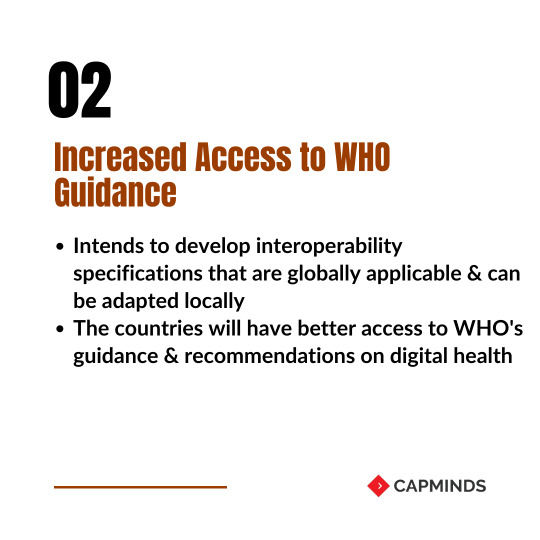
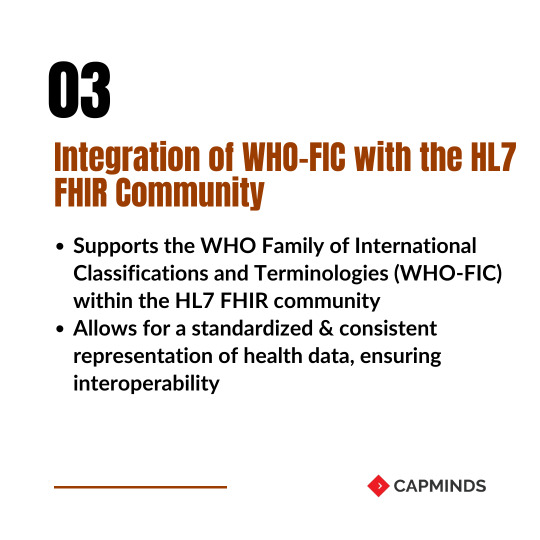
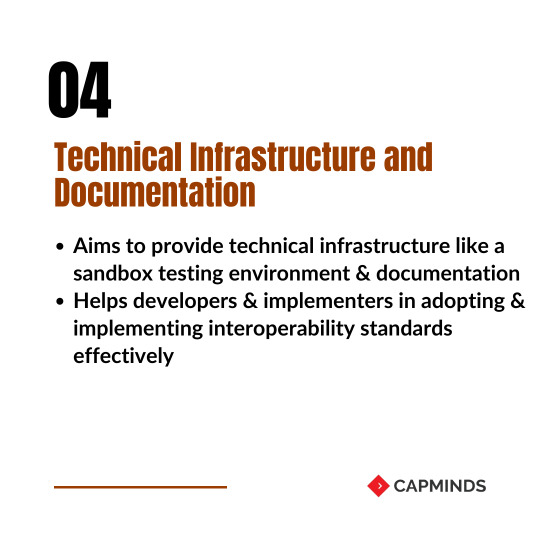
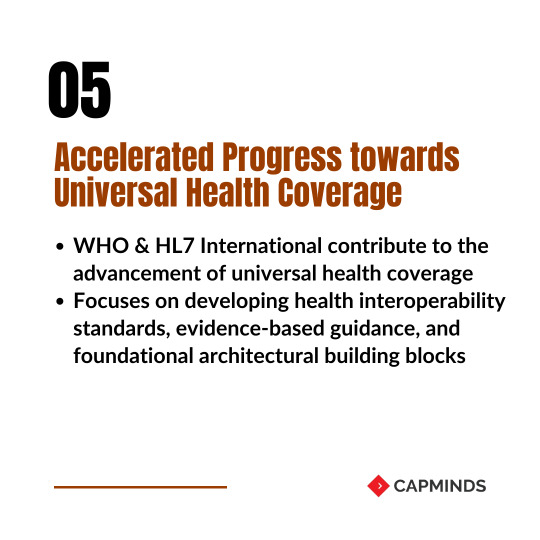
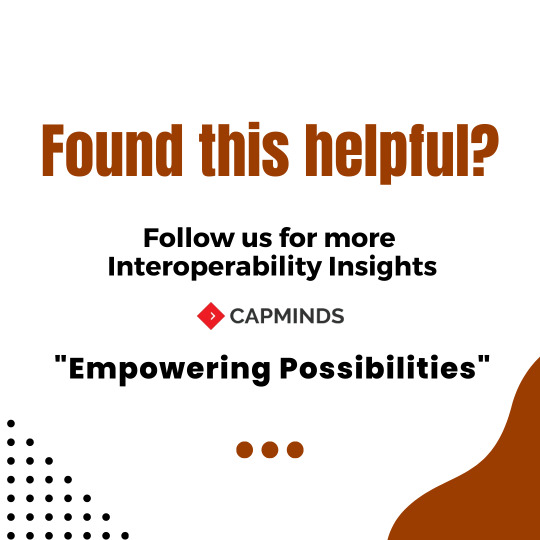
The collaboration between WHO and HL7 International brings together their respective expertise and resources to drive the adoption and appropriate use of interoperability standards globally.
This collaboration has the potential to harmonize digital health systems, improve data exchange and continuity of care, and contribute to the overall goal of achieving universal health coverage.
2 notes
·
View notes